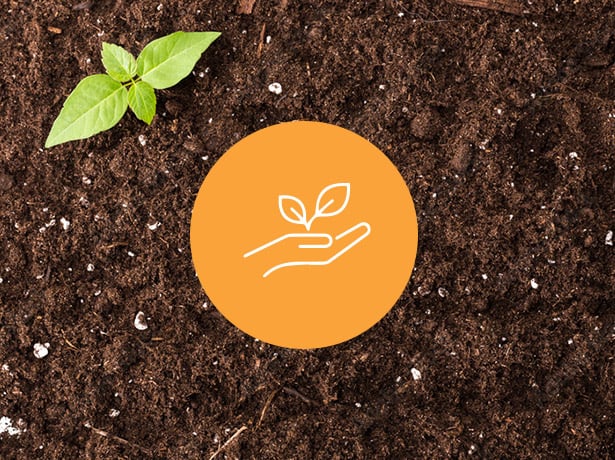Building Product Manufacturer Commitments
Building product manufacturer commitments refer to the initiatives and targets set by manufacturers to reduce waste and divert it from landfills during the production of their products. These are typically commitments at their factories and facilities. These commitments are aimed at promoting sustainable practices, minimizing environmental impact, and encouraging responsible waste management in the product’s manufacturing and throughout the product’s complete life cycle. Here are some common examples of manufacturer waste diversion commitments:
Recycling Programs: Manufacturers often establish recycling programs to ensure that their products and packaging materials are recyclable or made from recycled materials. They may set specific targets for the percentage of recycled content in their products and work towards increasing the recyclability of their packaging. Recycling programs can also include on-site recycling of materials for either reuse or input into pre-consumer recycled content products.
Zero Waste to Landfill: Some manufacturers commit to sending zero waste to landfill by implementing comprehensive waste management systems at their facilities. This involves reducing waste generation, implementing recycling and potentially composting programs, and seeking alternative methods of waste disposal, such as waste-to-energy conversion. While waste-to-energy can be controversial and seen as trading one problem for another, it is utilized in many authorities having jurisdictions around the world to achieve Zero Waste to Landfill goals. Many facility or organization certification programs do put a cap on the amount of waste-to-energy that can be considered in a ‘zero waste’ certification and it is typically at 10% of total waste.
Packaging Reduction: Many manufacturers commit to reducing the amount of packaging used in their products or replacing it with more sustainable alternatives. They aim to minimize the use of single-use packaging materials, promote reusable packaging, and explore innovative solutions like biodegradable or compostable packaging.
Supply Chain Engagement: Manufacturers recognize the importance of engaging their supply chains in waste diversion efforts. They may set commitments to work closely with suppliers, encouraging them to adopt sustainable practices, reduce waste generation, and improve recycling and waste management processes. Asking suppliers if they have a shipment material take back program or a recycling program of their own are some examples of how to start engagement.
Extended Producer Responsibility (EPR): EPR is a policy approach where manufacturers take responsibility for the end-of-life management of their products. Manufacturers commit to designing products for easy recycling or reuse, establishing collection and recycling systems, and funding the proper disposal of their products to prevent them from becoming landfill waste. There are numerous authorities having jurisdictions around the world that are now requiring EPRs for certain types of products, for example electronics and mattresses.
Circularity Initiatives: Manufacturers may pledge to adopt circular economy principles, which focus on designing products and processes that minimize waste and maximize resource efficiency. They commit to implementing strategies like product take-back programs, remanufacturing, and designing products for durability and easy disassembly for recycling. All the above concepts can play into an organization’s circularity plans.
Specific commitments typically vary among building product manufacturers, and they are based on their own initiatives guided by industry best practices, product type, and corporate sustainability goals.
Building Construction Site Waste
Building construction site waste diversion commitments refer to the goals and strategies set by construction companies, developers, or future owners to minimize waste generation and maximize the diversion of waste from landfill during the construction process. These commitments typically focus on reducing the environmental impact of construction activities, promoting sustainability, and exceeding waste management regulations. Some common waste diversion commitments and practices include:
Supply Chain Engagement: Construction firms may prioritize working with manufacturers who recognize the importance of minimizing waste, and make special efforts to coordinate with them on bids/procurement. The firms may also set commitments engage with these manufacturers and suppliers, encouraging them to adopt their own sustainable practices, reduce waste generation in their production, and improve recycling and waste management processes.
Recycling: Construction companies can commit to recycling construction and demolition waste materials, such as metals, concrete, wood, and plastics, instead of sending them to landfill. They set targets for the percentage of waste that should be recycled and establish processes for sorting and separating different types of materials on-site. Many sustainable building certification rating systems will set prerequisites or give credit for meeting criteria for recycling construction waste and certain sustainable codes have criteria around recycling or reuse.
Reuse: Companies can promote the reuse of materials whenever possible. This involves salvaging and repurposing materials from demolition or renovation projects, such as doors, windows, fixtures, or structural elements, for use in future construction projects or on the same project at the current site. Many sustainable building certification rating systems will set prerequisites or give credit for meeting criteria for reuse and certain sustainable codes have criteria around reuse or recycling.
Composting: Some construction waste, such as vegetation, can be composted rather than disposed of in landfills. Commitments to composting involve separating organic waste, such as branches, leaves, and grass clippings, and arranging for their proper composting or recycling.
Hazardous waste management: Construction sites can sometimes generate hazardous waste, such as paint, solvents, or chemicals. Code level compliance is the baseline, , but certain construction companies will go above and beyond. Leaders in the field will take best practices from across their sites, regardless of local requirements, and exceed code regarding the safe handling, storage, transportation, and disposal of hazardous waste, ensuring the protection of workers' health and the environment.
Collaboration with waste management providers: Construction companies commit to partnering with waste management service providers to ensure effective waste diversion. This involves working closely with recycling and waste management facilities, verifying their capabilities, and establishing clear guidelines for waste segregation and disposal.
Waste reduction: Commitments to waste reduction involve implementing practices that minimize waste generation in the first place. This includes careful planning and material management, accurate estimation of material needs, and avoidance of excessive or unnecessary purchases, along with implementing all or some of the concepts detailed above.
Training and awareness: Companies invest in educating their employees and subcontractors about waste diversion practices, promoting awareness of recycling and waste management procedures, and encouraging individual responsibility in minimizing waste generation.
By making these commitments, construction companies aim to reduce the environmental impact of their projects, conserve resources, minimize landfill waste, and contribute to a more sustainable construction industry.


